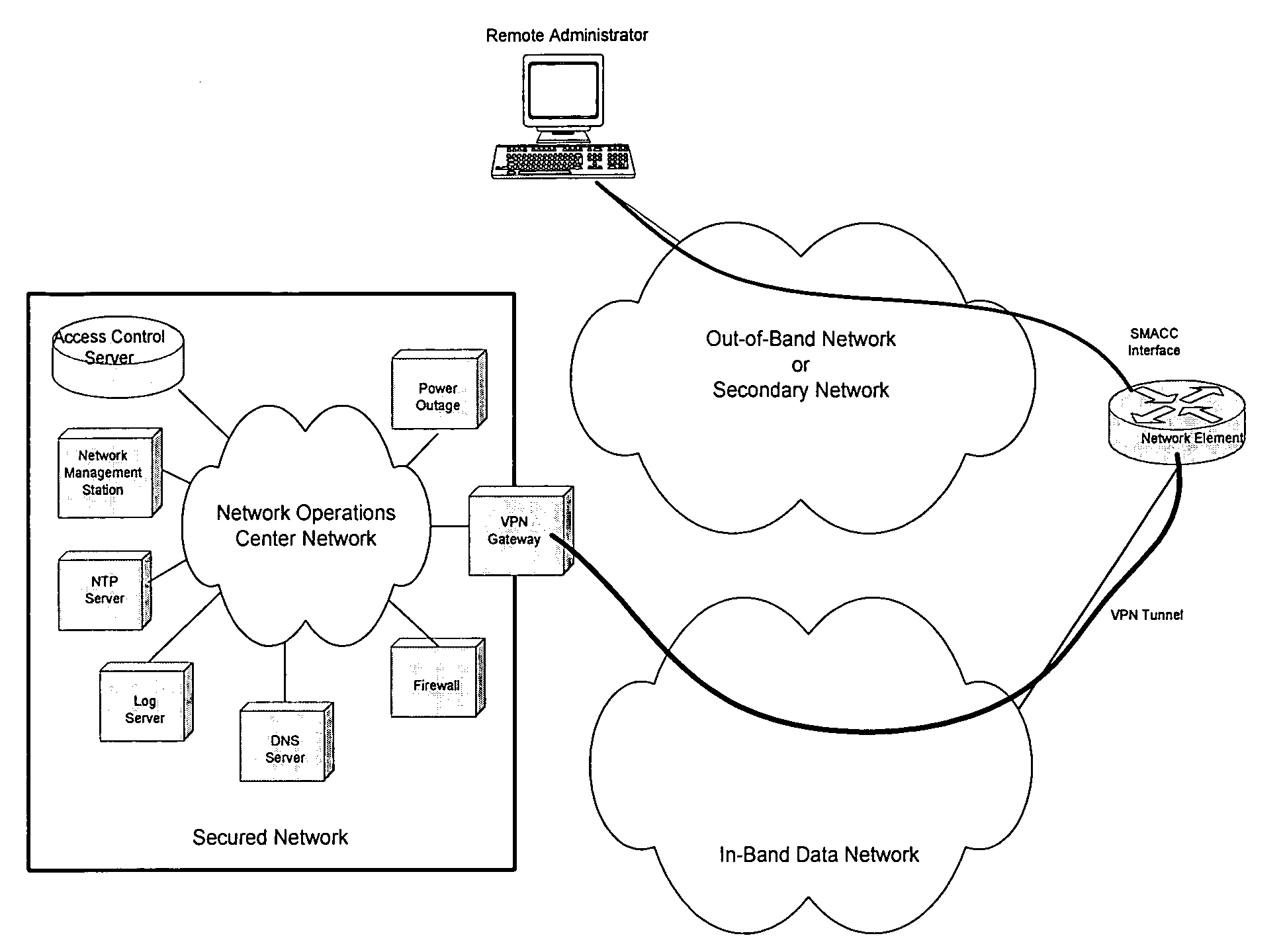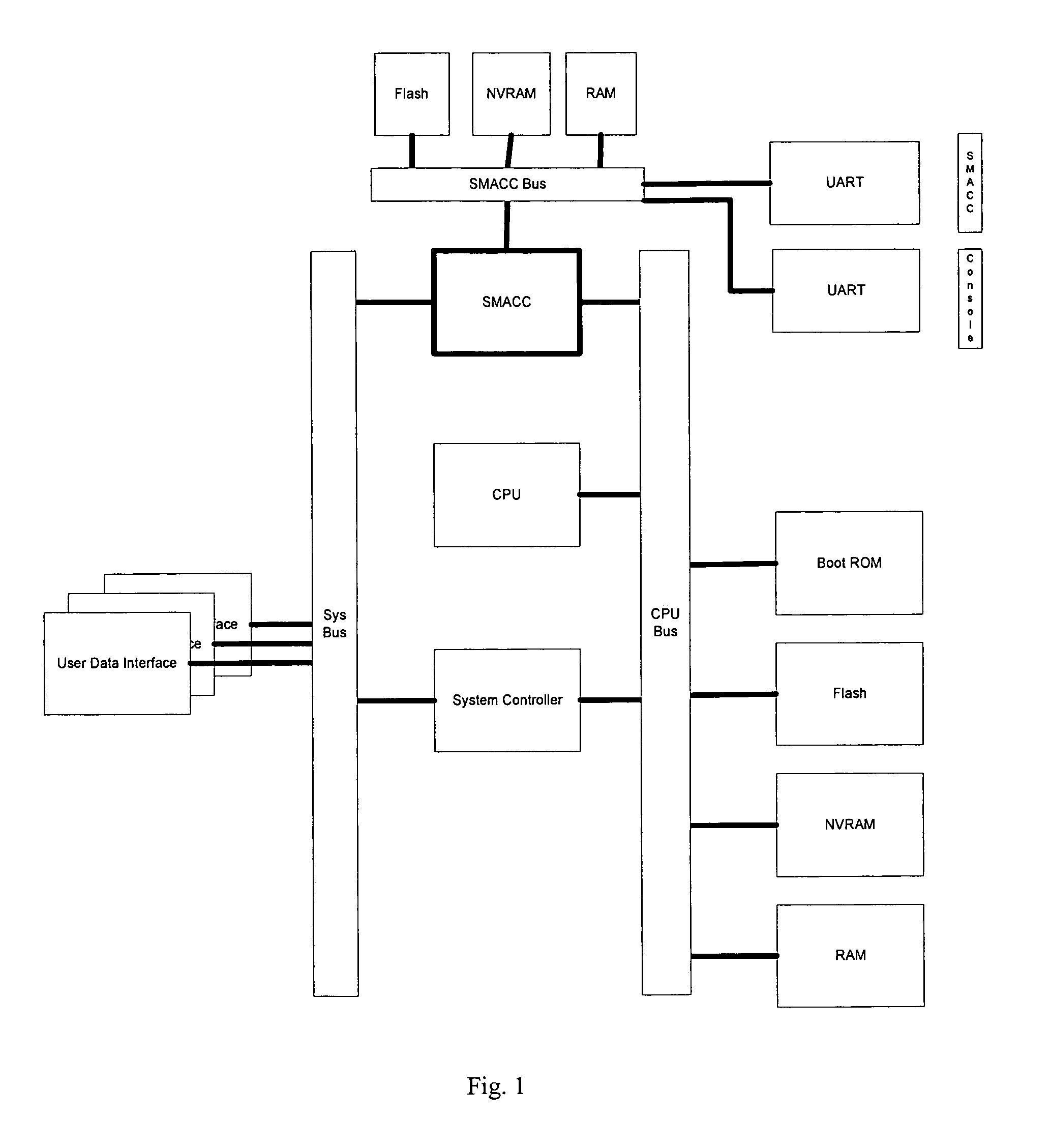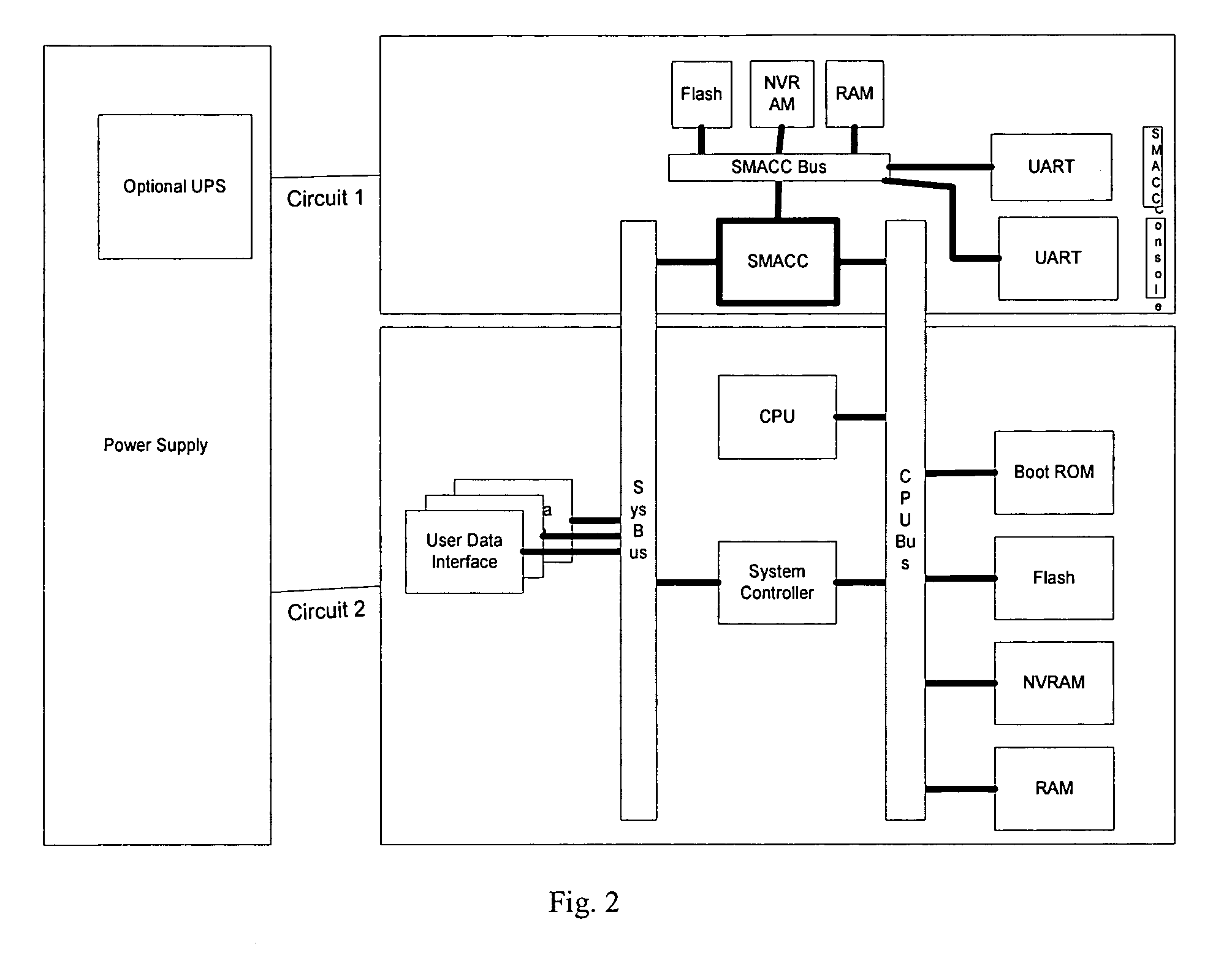Secure management access control for computers, embedded and card embodiment
a technology of security management and access control, which is applied in the direction of instruments, digital transmission, secret communication, etc., can solve the problems of inability to physically access the system for general maintenance or troubleshooting and repair, the vast majority of network elements are not in the same geographic location or easily accessible, and the cost of general maintenance and repair is prohibitive, both in time and personal cos
- Summary
- Abstract
- Description
- Claims
- Application Information
AI Technical Summary
Benefits of technology
Problems solved by technology
Method used
Image
Examples
Embodiment Construction
[0090]FIG. 1 illustrates the positioning of the SMACC chipset within the managed device. In a preferred exemplary embodiment, the SMACC processor has its own flash, Non-Volatile Random Access Memory (NVRAM), and Random Access Memory (RAM) for operating, however, an alternative exemplary embodiment as illustrated in FIG. 14 is also possible in which the SMACC processor utilizes the same flash, NVRAM, and RAM chips as the main processor and such implementations are not excluded. In these exemplary embodiments, it may be necessary to utilize a controller chip for the SMACC processor to access the necessary bus as illustrated in FIGS. 28 and 29.
[0091]The Flash chip is intended to safe the programs and microcode for the SMACC processor, the NVRAM to store operating parameters and configurations, and the RAM to act as the operating memory for the SMACC processor. It should be noted that additional chips can be included for additional security or to offload processing from the SMACC proces...
PUM
 Login to View More
Login to View More Abstract
Description
Claims
Application Information
 Login to View More
Login to View More - R&D
- Intellectual Property
- Life Sciences
- Materials
- Tech Scout
- Unparalleled Data Quality
- Higher Quality Content
- 60% Fewer Hallucinations
Browse by: Latest US Patents, China's latest patents, Technical Efficacy Thesaurus, Application Domain, Technology Topic, Popular Technical Reports.
© 2025 PatSnap. All rights reserved.Legal|Privacy policy|Modern Slavery Act Transparency Statement|Sitemap|About US| Contact US: help@patsnap.com



